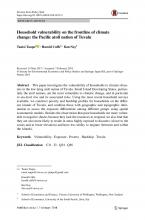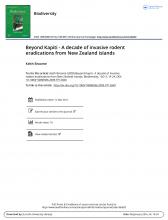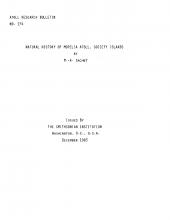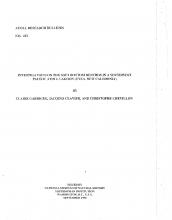Beyond Kapiti - A decade of invasive rodent eradications from New Zealand islands.

BRB
Available Online
New Zealand, an archipelago of more than 2000 islands, has a terrestrial fauna especially depauperate in native land mammals. Kiore (Rattus exulans) was the first of four rodent species introduced by people. A project to eradicate invasive rats from Kapiti Island in 1996, represented a turning point in the technology, complexity and scale at which managers of natural heritage on New Zealand islands could operate. This paper includes case studies of some significant projects targeting rodents, sometimes with other introduced mammals, undertaken in the 12 years following Kapiti. Details of the methods, costs, results and outcomes are provided for Kapiti, Whenua Hou, Tuhua, Campbell, Raoul, Hauturu, Taukihepa, and Pomona islands, collectively representing a total of over 23,000 ha of habitat cleared of introduced mammals. Research and trials undertaken in the Kapiti project provided the basis for future environmental risk assessments, allowing other projects to focus on knowledge gaps. New trends in invasive species eradication in New Zealand include more challenging multi-species eradication projects, some of which are undertaken by self- funded community groups. To summarise the lessons of the New Zealand experience: a programmatic approach is recommended which will fit each eradication within a context or framework of goals for those islands; address biosecurity issues at the outset; build capability to attempt the most challenging and rewarding projects; facilitate investment in monitoring and manage expectations of stakeholders to ensure their ongoing support. Success breeds success but is never guaranteed.



